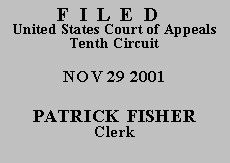

| ERVIN MOTON,
Petitioner-Appellant, |
|
| v. | |
| STATE OF UTAH; HENRY GALETKA,
Warden,
Respondents-Appellees. |
|
Petitioner Ervin Moton, a Utah state prisoner appearing pro se, seeks a certificate of appealability (COA) to challenge the district court's dismissal of his 28 U.S.C. § 2254 habeas petition. We deny a COA and dismiss the appeal.
In June 1984, Moton was convicted in state court of two felony counts: sodomy upon a child and sexual abuse of a child. The Utah Supreme Court affirmed his convictions on direct appeal in January 1988. Over twelve years later, on March 28, 2000, Moton filed his federal habeas petition challenging his convictions. The district court dismissed the habeas petition as untimely under 28 U.S.C. § 2244(d)(1).
On April 24, 1996, Congress amended what had been "the long-standing prior practice in habeas corpus litigation that gave a [state] prisoner virtually unlimited amounts of time to file a habeas petition in federal court," and "established a one-year period of limitations for [federal] habeas petitions." Hoggro v. Boone, 150 F.3d 1223, 1225 (10th Cir. 1998) (citing 28 U.S.C. § 2244(d)(1)). By statute, the one-year period of limitations generally begins running from "the date on which the judgment became final by the conclusion of direct review or the expiration of the time for seeking such review." 28 U.S.C. § 2244(d)(1)(A). For prisoners whose convictions became final prior to the AEDPA's effective date, April 24, 1996, the limitations period commences on April 24, 1996, and expires one year later. See Hoggro, 150 F.3d at 1225-26. Under AEDPA, the one-year limitations period is tolled while a defendant pursues state post-conviction relief, see 28 U.S.C. § 2244(d)(2), and we have held that the one-year limitations period "may be subject to equitable tolling." Miller v. Marr, 141 F.3d 976, 978 (10th Cir. 1998).
After reviewing the record on appeal, we agree with the district court that Moton's federal habeas petition was untimely. Moton's convictions became final well prior to the effective date of the AEDPA and his one-year period of limitations for filing a federal habeas petition began running on April 24, 1996. Moton did not file his federal habeas petition until March 28, 2000, nearly three years after the expiration of the limitations period. Although Moton now makes vague assertions about his lack of access to legal materials or representation, we find those assertions insufficient to warrant equitable tolling of the limitations period.
Moton also contends that AEDPA's imposition of a one-year limitations period for filing a petition for a writ of habeas corpus is unconstitutional, primarily because the limitations period violates the Suspension Clause, U.S. Const. art. I, § 9, cl. 2. We reject Moton's constitutional challenges. The AEDPA, including its limitations period, is constitutional. Cf. Felker v. Turpin, 518 U.S. 651, 664 (1996); Miller, 141 F.3d at 978. In particular, the limitations period, which is not jurisdictional, does not prohibit habeas petitions but simply requires that they be filed within a reasonable time. Further, the one-year limitations period has the rational purpose of encouraging the timely and efficient disposition of habeas claims.
We DENY Moton's application for a COA, deny his request to proceed in forma pauperis on appeal, and DISMISS the appeal. The mandate shall issue forthwith.
Entered for the Court
Mary Beck Briscoe
Circuit Judge
*.This order and judgment is not binding precedent, except under the doctrines of law of the case, res judicata, and collateral estoppel. The court generally disfavors the citation of orders and judgments; nevertheless, an order and judgment may be cited under the terms and conditions of 10th Cir. R. 36.3.